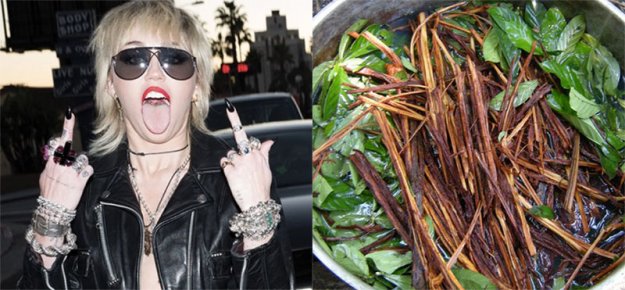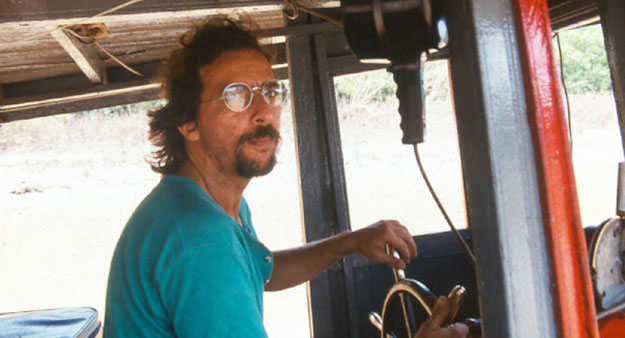A note on Ayahuasca
My friend, Steve Bloom, who owns and runs the website Celebstoner.com and was my compatriot at High Times for nearly 20 years, asked me to write a short thing on ayahuasca to go along with a piece he had on Miley Cyrus talking about it's effect on her life. Here is what I gave him:
Miley Cyrus Calls Ayahuasca 'One of My Favorite Drugs'

Miley Cyrus is sober these days, but she tells Rolling Stone:
"I would possibly take mushrooms. I did take ayahuasca, and I really liked that, but I really don't think I would do it again."
Cyrus goes on to explain:
"Ayahuasca was definitely one of my favorite drugs I’ve ever done. When I did it, I asked everyone else in the room, 'Did your entire life just change? Are you a new person?' They all looked at me and said, 'No.' And they’re like, 'You’re so extreme. Of course you have to have the most extreme trip off all.' Actually, the shaman said people take ayahuasca three, four times, sometimes 30 times before they have the kind of trip I had. I saw the snakes right away, and the snakes come and grab you and take you to the Mama Aya, and she walks you through your whole trip, and it was pretty crazy. I loved it, though."
Named CelebStoner of the Year in 2013, Cyrus smoked marijuana in public everywhere she could, including at award shows. But by 2017, the pop star stopped using it and knocked potheads.
"I like to surround myself with people that make me want to get better, more evolved, open. And I was noticing, it's not the people that are stoned. I want to be super clear and sharp, because I know exactly where I want to be."
Cyrus tells Rolling Stone she fell off the wagon during the pandemic and began drinking again. But no drugs. "Haven't done drugs in years," she says. "It would have to be a cold day in hell for me to relapse on drugs." It's unclear which drugs she's referring and whether Cyrus even considers marijuana a drug.

A Few Words About Ayahuasca
By Peter Gorman
We asked enthogenic plants expert Peter Gorman for his thoughts about ayahuasca. He sent us this reply.
Ayahuasca is a traditional tool for divination used throughout much of the Amazon jungle, particularly in the Northwest regions. It's a brew made by combining ayahuasca vine (Banisteriopsis caapi) with chacruna (Psychotria viridis, a plant in the coffee family) or huambisa (Diplopterys cabrerena) infused with the smoke of regional black tobacco, in river water. It's known by a host of names - yajé and natem among them - depending on which indigenous group is talking about it.
As a tool in the hands of a medicine man or woman, it allows the user, a curandero or curandera, to divine whether the medicine person’s village is about to be attacked, or when it was the right time to attack other villages, as well as when it was time to plant foods and so forth.
But ayahuasca also lets the user interact with the spirit world, allowing them to get in touch with dead relatives or ancients, and to connect with the spirits of plants to divine how to heal illnesses. It's also used by riveriños - people who live on the river - to divine who's bringing them bad luck with their crops or with love, who's giving them the evil eye and so forth.
"I’ve always thought of ayahuasca as three years of psychotherapy in a three-hour dream."
The Western world began a fascination with ayahuasca in the late 1980s, much of it due to the work of Terence McKenna and his brother Dennis. The central point of that fascination is Iquitos, Peru, which currently has several dozen lodges specializing in serving the medicine.
In much of Amazonia, it's typical of river people to reach out to a curandero or curandera and present them with their problems. The medicine person then drinks the ayahuasca, goes to another level of reality and contacts friendly spirits there who provide answers to the user’s questions. Westerners have turned that model on its head by insisting on drinking the ayahuasca along with the medicine person serving it.
As popular as ayahuasca has become it's unlikely to catch on as a club drug because most people drink it spend a good portion of the ceremony vomiting up the bile of their lives in an uncontrollable manner.
The ceremony is generally done at night, in darkness, lasting from three to five hours. The participants sit in a semi-circle around the person serving, who chants and shakes a bundle-leaf rattle throughout the ceremony as an anchor to the people drinking.
Users find that it treats all sorts of illnesses, from PTSD to chronic stomach ailments, that it frequently allows a person to glimpse what they describe as the divine, or life force of the universe, and that it can reset a person’s life by bringing up and eliminating painful and debilitating memories. I’ve always thought of it as three years of psychotherapy in a three-hour dream.
Gorman is author of Ayahuasca in My Blood and the subject of the documentary More Joy Less Pain. He leads ayahuasca tours several times a year.
